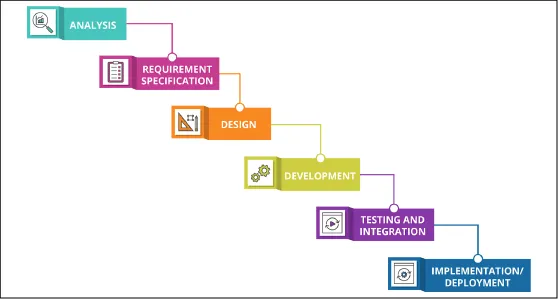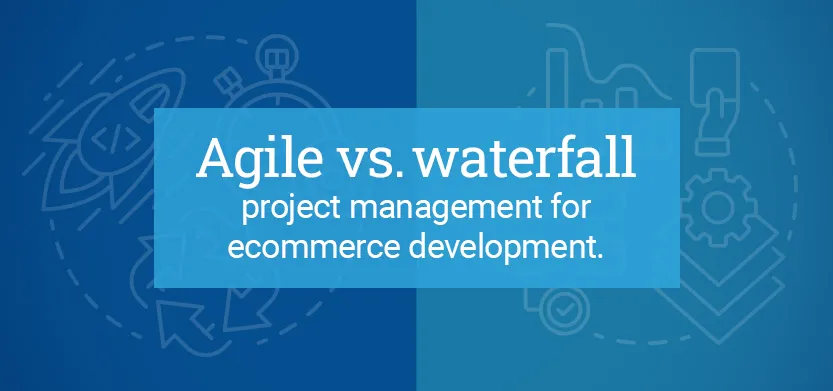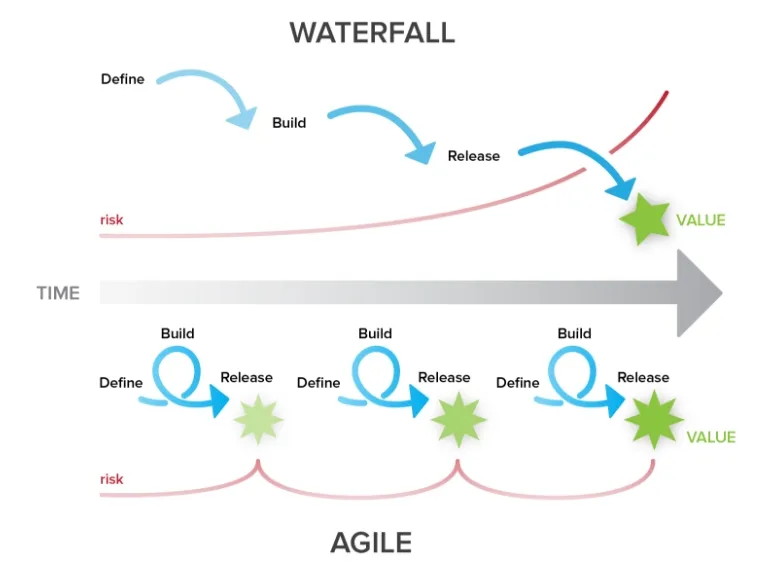

Posted in Software & Development
March 30, 2022
Agile vs. waterfall project management for ecommerce development
To get your ecommerce development project on track and keep it that way, adopting the correct project management strategy is critical to a successful outcome. This article discusses two of the most popular styles of project management, Agile and waterfall.
Agile vs. waterfall project management
Definitions
Agile development
“Agile is an iterative approach to project management and software development that helps teams deliver value to their customers faster and with fewer headaches. Instead of betting everything on a "big bang" launch, an agile team delivers work in small, but consumable, increments. Requirements, plans, and results are evaluated continuously so teams have a natural mechanism for responding to change quickly.” - Atlassian
Waterfall development
“The waterfall model is a breakdown of project activities into linear sequential phases, where each phase depends on the deliverables of the previous one and corresponds to a specialization of tasks. It tends to be among the less iterative and flexible approaches, as progress flows in largely one direction ("downwards" like a waterfall) through the phases of conception, initiation, analysis, design, construction, testing, deployment and maintenance.” - Wikipedia, Waterfall model
Agile vs. waterfall project management
One of the most significant and most noticeable differences between agile and waterfall project management methods for software development is the approach to quality and testing.
In the waterfall model, work moves through linear software development lifecycle phases — with one stage being completed before another can start — so the testing phase is separate and follows a build phase. However, in Agile software development, testing is conducted in the same iteration as programming.

Source: The Cascading Costs of Waterfall, Jones + Waddell
Testing is done in every iterative step of a project management methodology founded on Agile values and principles. With each phase in which a small piece of the overall solution is built, users can get a hands-on evaluation of those new pieces of software and validate the value. After the users know the actual value of the updated portion of the software, they can make better decisions about the software's future.

Source: Eight Essential Ecommerce Trends report, Acro Commerce
Risks of Waterfall over Agile
The risk over time is pretty straightforward when comparing the two project management models for software development based on testing alone.
In a waterfall-style project, everything is built and awaits testing before launch. Delayed testing increases the risk of the entire project failing if there are any deployment or code defects.
With a project management style built on Agile principles and a Scrum framework, the whole project works in manageable sprints, where one aspect of the project is defined, built, tested and released. This division of labour ensures that testing happens over multiple iterations and the entire project doesn't fail at launch.

Source: Agile vs Waterfall: Pros and Cons, Differences and Similarities, GanttPRO
Benefits of Agile over Waterfall
In a waterfall model, there is no vehicle for continuous improvement. Once the project is live in an organization, it often sits as-is for many years, and the company's focus turns to marketing, traffic, customers and sales conversions. When new features are added, the company stops its marketing and sales activities to focus on building the new features. While the build is in progress, continuing to promote sales and messaging is not realistic. This is where introducing an Agile methodology works best.
Agile software development advocates adaptive planning, evolutionary development, early delivery, and continual improvement. It encourages flexible responses to changes in requirements, resource availability, and understanding of the problems to be solved.
How Agile works at Acro Commerce
Agile development approach.
Plan, sprint, launch, iterate, repeat. The project management fundamentals founded on agile principles.
Projects change direction, and that is okay. We approach software project management by relying on a few classic tactics:
- Plan, sprint, demo, retro — follow the ceremonies.
- Pivot if the business changes directions.
- Communication and documentation.
- Collaboration tools that give you a full view of the progress.
- Both business and technical leadership on your team.
